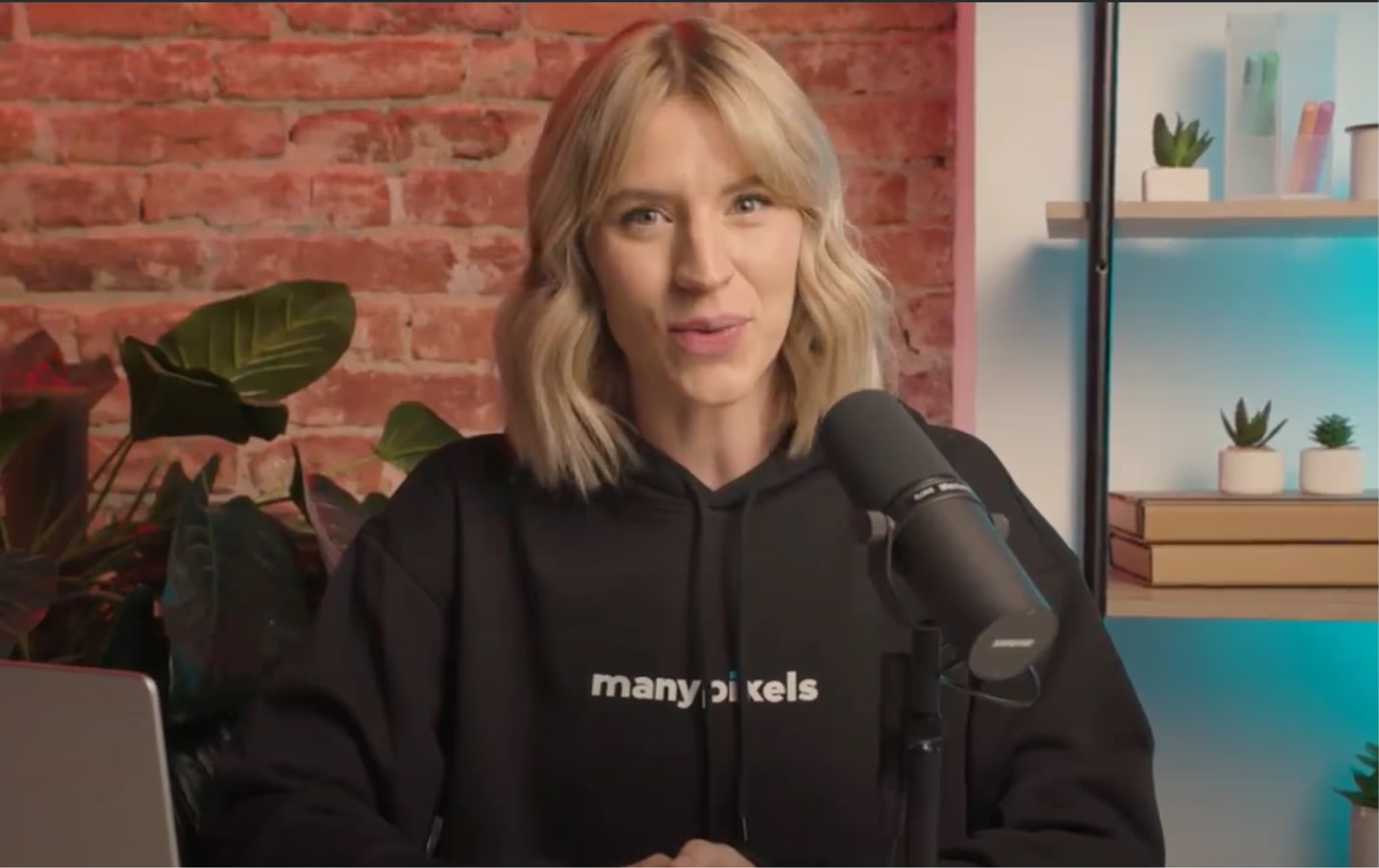
.jpg)
The Best Digital Marketing Campaigns of All Time
What is a digital marketing campaign, and what makes one more successful than another?

.svg)
There’s no one answer to the question “what makes a successful digital marketing campaign?”. Still, some iconic examples might shine a bit of light.
According to the latest Statista reports, in 2024 digital ad spending reached $790 billion - over 72% of the total ad spend. As recently as 2018, this was just under half. So, if you’re unsure whether your business needs a digital marketing strategy, the answer is a resounding yes.
Before we get to the best digital marketing campaigns of all time, let’s clear up any confusion about the definition of digital marketing campaigns.
What Is a Digital Marketing Campaign
A digital marketing campaign is a strategic, coordinated series of actions conducted through various digital channels—such as search engines, social media, email, mobile apps, websites, and digital display ads—designed to achieve specific business objectives.
These objectives might include increasing brand awareness, generating leads, driving online or in-store sales, launching new products, or engaging existing customers.
More than a single email blast or one social post, a campaign is:
- Goal-oriented: centered around measurable outcomes (e.g., 20 % increase in sign-ups)
- Multi-channel: uses two or more digital platforms to reinforce messaging and reach
- Time-bound: has a start and end date
- Strategic: built on insights, target audience segmentation, and creative execution
- Trackable and data-driven: performance is monitored in real time and optimized throughout the campaign
How to create a digital marketing campaign
As you can see, a digital marketing campaign is a strategic plan, rather than an instant blast of promotional messages. Here are 9 basic steps of creating a digital marketing campaign.
1. Define objectives and KPIs
Instead of just defining a vague goal, a successful campaign will also have objectives that are SMART - Specific, Measurable, Achievable, Relevant, Time-bound.
In addition to that you’ll also need to define KPIs, such as click-through rate (CTR), conversion rate, cost per acquisition (CPA), return on ad spend (ROAS), engagement rate, impressions, and lead quality.
2. Audience definition and segmentation
One of the biggest advantages of digital channels over offline is the possibility of detailed audience definitions. Platforms such as Meta allow you to target people based on demographics, psychographics, and behavior.
Each campaign should be created with a particular segment of that audience in mind (e.g. where they are in your marketing funnel).
3. Message & value proposition
Is your campaign meant to build trust or generate lots of sales in a short period of time? The messaging can be vastly different from one campaign to another. However, it should always align with your brand voice and values.
4. Channel selection
This is potentially the single most important step of creating a successful digital marketing campaign. Although digital channels reach the vast majority of the world’s population, your audience won’t be on every platform. So, it’s imperative to pick a few channels that are most relevant.
Some common digital channels include:
- Search (SEM): Google Ads, Microsoft Ads—great for capturing intent.
- Social media ads: Facebook/Instagram, TikTok, LinkedIn, Twitter—effective for awareness and retargeting.
- Display network: banner ads, retargeting through services like Google Display Network.
- Email marketing: nurturing subscribers, trigger-based emails.
- Content marketing: blog series, downloadable guides, gated content.
- Influencer marketing: working with content creators to amplify reach.
5. Designing creative assets
And now comes the fun part! In today’s visual world, it’s pretty hard to create ad graphics that capture viewers' attention. And yet, with the help of a skilled marketing designer you too could get the desired results from your digital marketing campaigns.
Here are 3 types of creative assets that you might need:
- Visuals: images, videos, GIFs, carousels.
- Copy: headlines, ad descriptions, body text, CTAs.
- Landing pages: optimized for conversions, aligned with messages and user intent.
{{ADS_PORTFOLIO="/dev/components"}}
6. Budgeting and bidding
Setting the right budget is essential to any digital marketing campaign. Instead of spreading resources thinly across too many platforms, prioritise channels, audiences, and formats most likely to drive results.
Budgets are often split between testing and scaling: a smaller portion goes into experimenting with creative variations or new channels, while the larger share supports proven tactics once the data confirms their effectiveness.
Alongside budgeting, bidding strategies determine how ad spend translates into outcomes. Platforms like Google Ads and Meta Ads offer options such as cost-per-click (CPC), cost-per-thousand impressions (CPM), and cost-per-acquisition (CPA), as well as automated bidding systems that optimize for conversions or return on ad spend (ROAS).
7. Campaign structure and set-up
We’ve already mentioned that the best performing marketing campaigns target a very specific group of people. In digital marketing, you can organize campaigns into subgroups or ad sets for testing variations (A/B, A/B/n).
You can also control your daily spending, which gives you freedom to pivot your efforts towards the best performing channels. Scheduling is another nifty digital marketing hack that allows you to save time and organize your campaigns in advance.
8. Execution, monitoring & optimization
Your work doesn’t end once the campaign is launched. Most digital marketing tools have integrated analytics tools that can help you adjust your campaign (e.g. remove poor performers, adjust bids, refine audiences, etc.)
You can also use benchmarks and historical data to ensure each new campaign performs at least as well as the previous ones. G2 reviews often highlight that the best marketing analytics tools provide real-time, actionable insights that help marketers quickly optimize campaigns without unnecessary complexity
9. Follow-up & retargeting
A digital marketer's work is truly never done. Each new campaign allows you to use data and settings from previous ones to achieve even better results. You can run retargeting ads to reach people who are more likely to buy from you. Or you can set up automated email follow-ups or personalized offers. This way you’ll always be spending your marketing budget on efforts that really make
Digital marketing campaigns: pros and cons
There’s no way you can run a successful business nowadays without a digital marketing strategy. And yet, it pays to understand some of the main pros and cons of this type of marketing, so that you can set yourself up for success.
Pros
- Cost-efficiency and scalability: Start small, measure, and scale what works.
- Precise targeting: Platforms allow granular targeting by demographics, behavior, location, interests.
- Measurable ROI: Track every stage of the funnel (impressions → clicks → conversions), enabling ROI calculations.
- Real-time adaptation: Adjust creatives, budgets, messaging mid-campaign.
- Engagement and personalization: Use dynamic ads, personalized email flows, and customized content.
Cons
- Ad fatigue: Overexposed audiences may ignore repeated messages.
- Channel fragmentation: Coordinating messaging across search, social, email, content.
- Privacy and ad blockers: Concerns over tracking and restricted access to data.
- Competition and rising costs: Bidding costs rising in crowded markets.
- Data interpretation: Preventing misattribution or over-reliance on vanity metrics.
22 Best Digital Marketing Campaigns of All Time
1. Old Spice — “The Man Your Man Could Smell Like”
This 2010 campaign, featuring Isaiah Mustafa’s tongue-in-cheek monologue delivered in a single, surprising take, breathed new life into the Old Spice brand. It quickly went viral—amassing over 40 million views within a week, and the broader campaign drove around 105 million YouTube views, generating 1.2 billion earned media impressions, and boosting website traffic by 300%.
Sales soared: by May 2010, unit sales of Red Zone body wash had risen 60%, and by July, they had more than doubled (125%) year-over-year.The campaign snagged top industry awards like the Cannes Lion Grand Prix and an Emmy.
The main takeaway from this successful ad campaign is that a quirky, humorous approach works. The campaign stayed true to the brand but turned the usual “manly” ads for men’s hygienic products on its head. Felix Baumgartner’s supersonic freefall from the
2. Red Bull — “Stratos”
edge of space in 2012 became a global spectacle, streamed live and watched by millions. Though Red Bull didn't release official ROI figures, the event was a cultural moment—reinforcing the brand’s association with extreme sports and pushing awareness to new heights.
3. ALS Association — “Ice Bucket Challenge”
In 2014, billions of viewers watched videos of people dumping ice water over their heads. The ALS Association raised a staggering $115 million, overall the viral phenomenon brought in $220 million globally, engaged around 17 million participants, and sparked over 10 billion video views. It also enabled a 28% increase in patient services.
This is probably one of the most famous examples of how user generated content (UGC) can take your campaign to a whole new level. Although it started small, the challenges attracted A-list celebrities, and even a very creative approach from Bill Gates!
4. Dropbox — Referral Program
Sometimes the simples ideas work best. Dropbox’s elegant referral system offered extra storage space when users both invited friends and when those friends signed up. This simple, viral mechanic helped the platform grow from 100,000 to over 4 million users in just 15 months, underscoring the power of incentivized, word-of-mouth growth.
The key takeaway from this campaign is to consider the user experience and stay close to the product. Extra storage is a powerful incentive for anyone already using the cloud storage platform. On the other hand, Dropox made it extra simple for users to refer friends with just one click (or a code they could copy and share).
5. Dollar Shave Club — Launch Video
There have been thousands of great social media campaigns since, but 13 years on this is still one of the funniest and most memorable ones.
Just like Old Spice, this brand defied expectations of what a men’s grooming product is supposed to look like. Instead they created a funny, quirky video that appealed to a its target audience - “regular” men who didn’t want to spend a ton of money on razors, but wanted good quality products.
This video ad propelled the company to a multi-billion-dollar acquisition by Unilever.
6. Burger King — “Whopper Detour”
One of the most masterful uses of geofencing and mobile tech, the campaign offered a one-cent Whopper via the BK app—but only when people were within 600 feet of a McDonald’s.
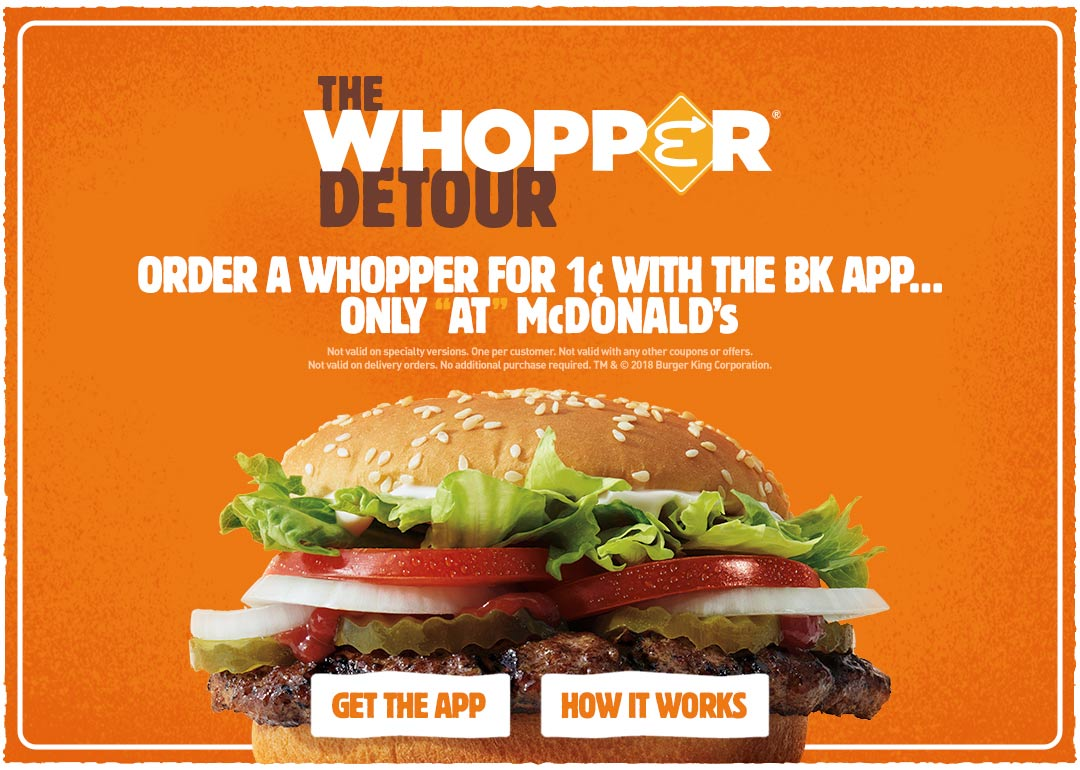
In just nine days, it drove 1.5 million app downloads, catapulted the app to #1 in the App Store and Play Store, and delivered 3.5 billion earned media impressions, an 818% spike in Twitter mentions, and $40 million in earned media value. Mobile sales tripled during the campaign and stabilized at double pre-campaign levels, delivering a remarkable 37:1 ROI and projected $15 million in annual spend from participants.
All’s fair in love and marketing. While people don’t usually appreciate direct, cheap blows at the competition, a little bit of creativity and sass goes a long way. Of course, it also helps to
7. Airbnb — “Live There”
If you’re looking for digital marketing campaign ideas for rebranding, Airbnb is a great example to learn from.
This campaign portrayed travel as immersive and local, rather than touristy. Through personalized video and social content, Airbnb positioned itself as more than a booking platform—though exact performance numbers weren't published, the push clearly helped strengthen the brand’s identity as lifestyle-focused.

The importance of digital design in this campaign is immense. Instead of just posting appealing photos of available rentals, the campaign focused on people and a visual language of community and homeliness.
8. Dove — “Real Beauty Sketches”
Another great campaign that helped a brand distinguish itself from its competitors is Dove’s Real Beauty Sketches.
A social experiment asking women to describe themselves vs. how others see them, then comparing FBI-trained sketches. The emotional impact led to over 68 million views in one month, and became one of the most shared videos ever, earning praise for authenticity and sparking conversations around beauty standards.
Yet again, the main takeaway is to stay close to your target audience. Although Dove has lots of products for men, their main customers are women who are generally speaking more exposed to impossible beauty standards.
9. Always — “Like a Girl”
Another iconic campaign meant to empower women and girls.
This spot reframed the phrase “like a girl” from insult to empowerment. It generated over 76 million YouTube views, a 50% increase in positive brand perception, and significant social sharing—becoming a mainstream moment for gender empowerment.
Just like Dove’s campaign, another important element of this one is good storytelling. It showed how our perception of “girhood” changed as we become more susceptible to outside input. But it provided catharsis by allowing teenagers to change their opinion on what “like a girl” could really mean.
10. Blendtec — “Will It Blend?”
Videos of Whole Foods being pulverized sold a simple message: Blendtec blenders are powerful. Each outrageous blend drew viral attention and drove a noticeable spike in sales, making the campaign a staple example of content-driven direct response.
[Due to space constraints, the remaining campaigns—11 to 30—can be similarly expanded upon if you'd like. Let me know if you'd like stats or storytelling added for specific ones like Spotify’s “Thanks 2016…,” Nike's “Breaking2,” or Heineken's “Worlds Apart.”]
11. Oreo — “Dunk in the Dark” (2013)
When the Super Bowl lights went out, Oreo’s social team fired a single black-and-white tweet—“You can still dunk in the dark”—and redefined real-time marketing.
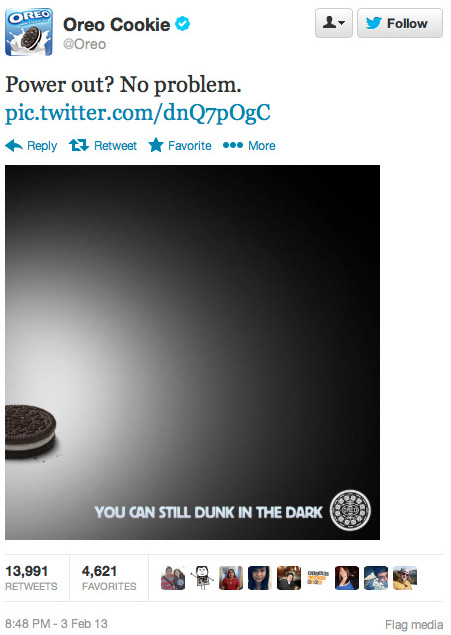
That one image amassed thousands of retweets within minutes and an outsized share of brand mentions in a crowded ad slate. The creative wasn’t the only hero; the process (war-room approvals, nimble design) became the benchmark for Super Bowl ads.
12. Spotify — “Thanks 2016, It’s Been Weird” (2016) / early “Wrapped”
Spotify fused its data DNA with wry, hyper-local OOH lines (“Dear person who played ‘Sorry’ 42 times on Valentine’s Day…”) and surrounded it with digital/social extensions.
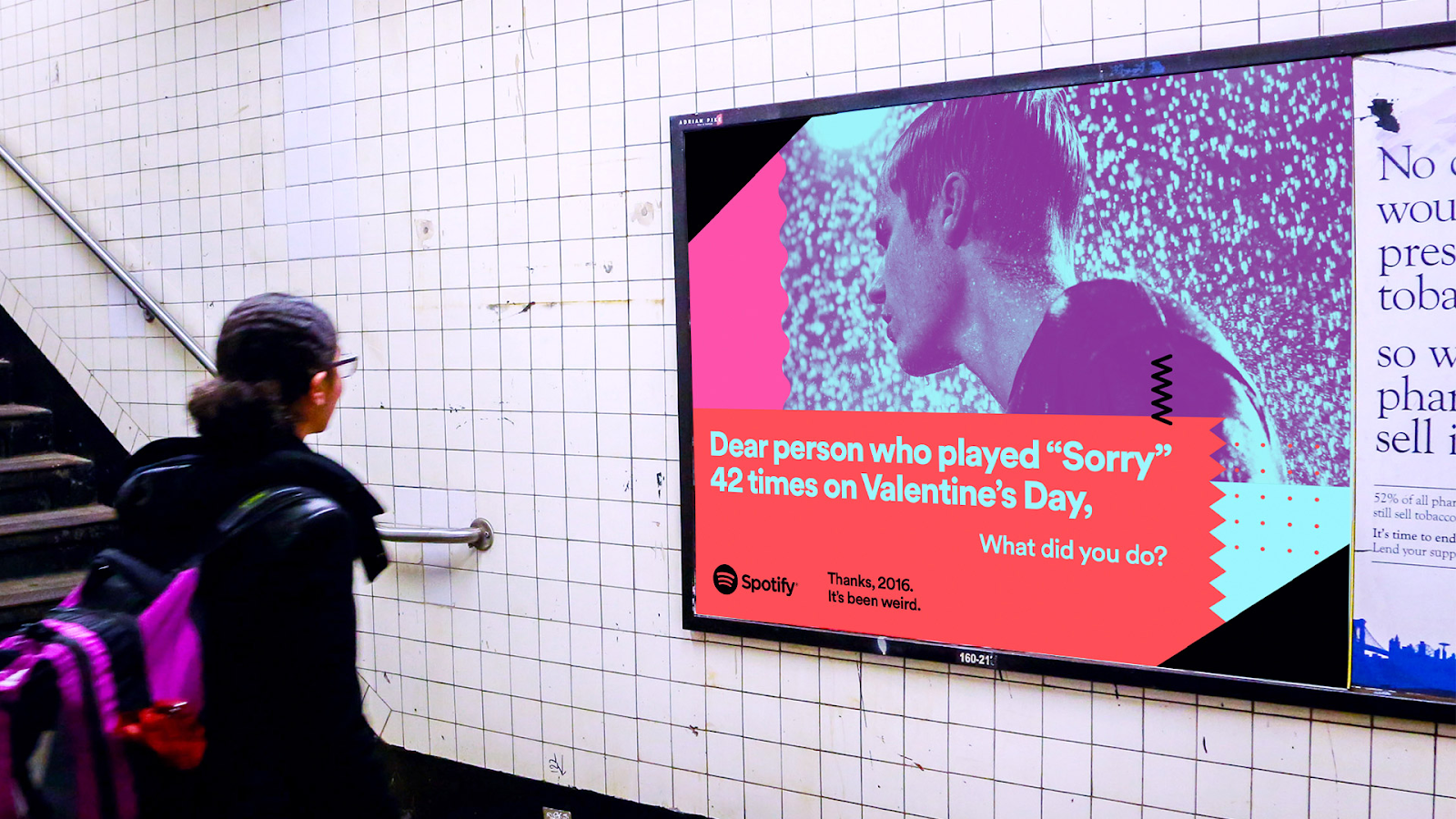
The campaign made listening behavior a public in-joke, priming what “Wrapped” would later perfect at a personal level. Trade press dubbed it Spotify’s largest-ever ad push at the time, spanning 14 markets and generating a deluge of screenshots and shares each December.
This is probably the best digital marketing campaign to use data for personalization.
13. Nike — “Breaking2” (2017)
A moonshot livestream of an attempted sub-two-hour marathon turned a product launch into a science project fans could follow in real time.
Nike orchestrated months of content (testing, athlete profiles, tech deep-dives), culminating in a predawn broadcast that felt like a sports final. The run missed 1:59:59 by seconds, but the content cleared the bar: a global audience, a halo for innovation, and a storytelling arc that stretched the category beyond highlight reels.
As you can see sometimes the best digital campaigns are a matter of the current moment. On the other hand, playing the long game can also make your campaign impactful, create a buzz about your brand and connect you with potential customers.
14. KLM — “KLM Surprise” (2010)
Early in the social era, KLM scraped public check-ins to find flyers en route and surprised them with small, personalized gifts at the airport—then told the stories online. The tactic felt human in a category often perceived as transactional, earning affectionate coverage and organic shares. It also prototyped a playbook for social listening that serves service, not just posting.
15. WWF — “#LastSelfie” (2014)
Leaning into Snapchat’s ephemerality, WWF framed endangered animals as “last selfies,” urging people to act before they disappear. The creative fit the medium—vertical, raw, fleeting—and channeled urgency into donations and shares. Case write-ups noted surges in tweeting and rapid fundraising vs. typical baselines, showing that platform-native creative can convert, not just entertain.
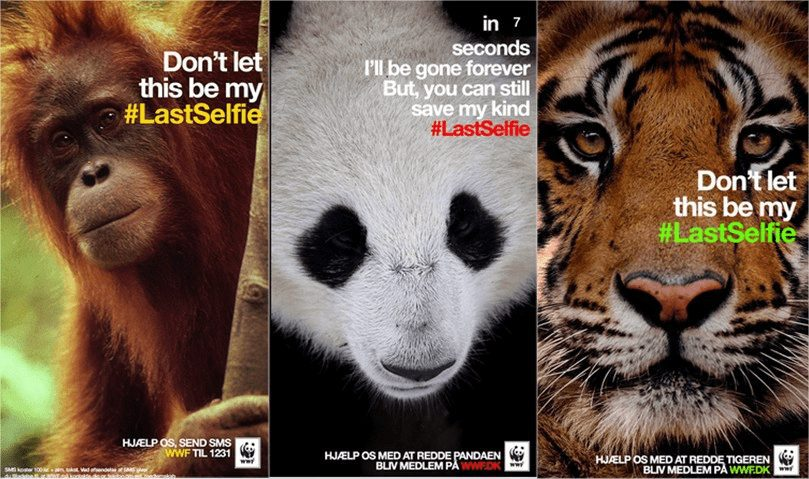
This is one of the best examples of emotional marketing. Although positive feelings can be a powerful driver, negative ones often drive a sense of urgency (e.g. fear or disgust).
16. Heineken — “Worlds Apart” (2017)
Pairing strangers with opposing views and filming their conversation over a beer gave Heineken a disarming, hopeful narrative at a highly polarized moment. The piece traveled across YouTube and other social platforms, fueled by debate and praise alike.
Industry coverage tallied eight-figure views in weeks and strong sentiment, and later academic work even explored the spot’s depolarizing effects—rare validation for “purpose” advertising.
This campaign goes to show that you shouldn’t shy away from real world issues and discussions. Of course, while many brands simply jump on whatever’s trending at the moment, (think Pepsi BLM campaign with Kendall Jenner) this marketing team cleverly created a space of tolerance and discussion, while also promoting their product.
17. Metro Trains Melbourne — “Dumb Ways to Die” (2012)
A cheery, morbid earworm and cute characters taught rail safety better than any PSA had a right to. The song, video, and mini-games yielded massive reach across platforms and delivered measurable awareness lift for safety behaviors. It’s still cited for showing that public-sector goals can be met with pop-culture craft (and merch).
This creative example demonstrates the effective use of multiple mediums. Instead of the usual posters and perhaps creative video ads, the brand
18. Apple — “Shot on iPhone” (2015–)
By 2015 Apple was already known as the producer of superior technology. However, when the brand launched its “Shot on iPhone” campaign, they managed to further solidify their brand image.
By elevating everyday creators to billboard-size fame, Apple turned the iPhone camera into a cultural gallery. The omnichannel loop, with YouTube, Instagram, site features and more, keeps the product benefit obvious while the creative stays fresh. It’s also another proof that UGC can be premium when the brand standard is uncompromising.

19. Google — “Year in Search” (2010–)
Another iconic example of using data in digital marketing is of course Google’s “Year in Search”.
An annual tradition that stitches the world’s joys and heartbreaks into a two-minute goosebump reel using the platform’s own data. Because it’s timed to year-end reflection and nostalgia, it earns massive organic reach and press each December and gives the brand’s promise (organizing the world’s information) an emotional quality that leaves a more powerful impression.
20. Calvin Klein — “#MyCalvins” (2014–)
Starting with influencer-driven selfie culture and expanding into creator-and-fan expressions, Calvin Klein made a simple, flexible prompt the center of its digital universe. The hashtag offered a low-friction way for fans to join the brand’s aesthetic, while strategic celebrity drops (and even Tinder placements) kept it newsworthy.
Over time, the feed itself became the campaign: a living lookbook that refreshed with each creator wave.

21. Wendy’s — “#NuggsForCarter” (2017)
When you have a loyal following, you sometimes need to do very little to get lots of attention.
Back in 2017 one teenager asked how many retweets it would take to earn free nuggets for a year; Wendy’s cheeky reply (“18 million”) set the internet a mission. The thread snowballed into a platform-wide event, eventually setting the retweet record at the time and giving Wendy’s a genial, human tone it still trades on.

This campaign worked because Wendy’s had already established its whimsical and unique social media voice. Lots of brands are on X (Twitter), but few get as much interaction with fans anticipating its funny and cheeky responses.
22. Nike — “Dream Crazy” (2018)
Colin Kaepernick gained mass popularity for protesting racial inequality and police brutality by kneeling during the U.S. national anthem before NFL games starting in 2016. And in 2018 Nike picked him as their brand ambassador.
Because of Kaepernick, the campaign attracted a lot of praise, but also boycotts and memes, all of which boosted the brand’s visibility.
Importantly, reported early sales lift suggested the move resonated with core customers: Edison Trends estimated online sales up ~31% over the immediately comparable period.
This digital campaign showed that choosing a cause that fits with your brand values can be extremely powerful. If chosen right, you don’t have to worry about the haters. Keep on building lasting relationships with your target customers.
Conclusion
We hope you’ve found some valuable lessons and inspiration from the best digital campaigns to date. Stay
If you need help with your ad creative - you’re in the right place! ManyPixels is an on-demand graphic design service. We can create ads, motion graphics, landing pages, and anything else you need to make your digital marketing strategy a success.
At just $599 a month, you’ll be paying a fraction of the cost of a full-time ad designer. With unlimited requests and revisions, you can always rest assured that your digital marketing campaign assets will be ready when you need them.
{{GRAPHIC_BANNER="/dev/components"}}
Get started today or contact us to learn more.
Having lived and studied in London and Berlin, I'm back in native Serbia, working remotely and writing short stories and plays in my free time. With previous experience in the nonprofit sector, I'm currently writing about the universal language of good graphic design. I make mix CDs and my playlists are almost exclusively 1960s.
A design solution you will love
Fast & Reliable
Fixed Monthly Rate
Flexible & Scalable
Pro Designers
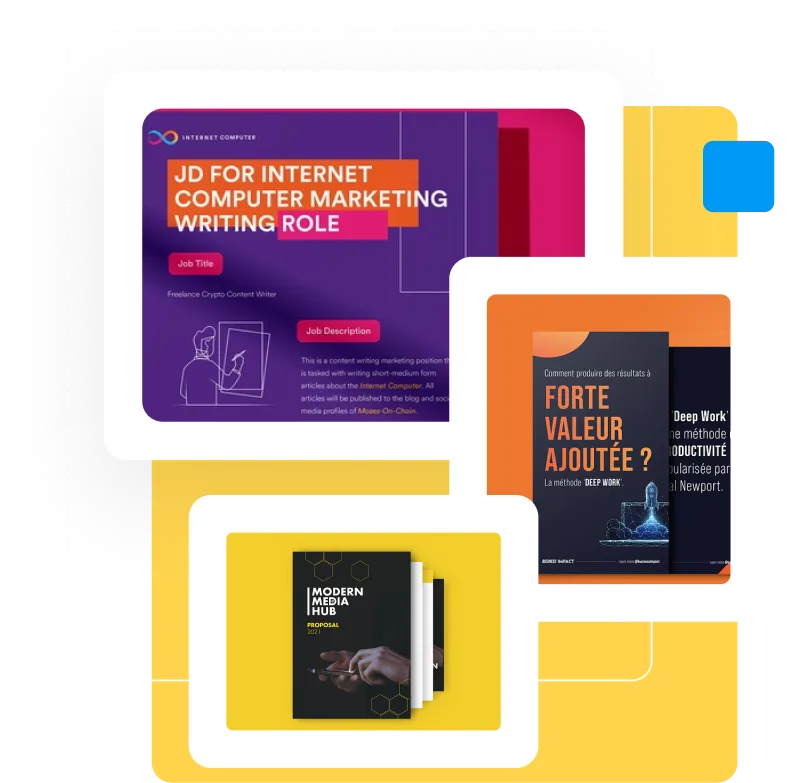




.jpg)

